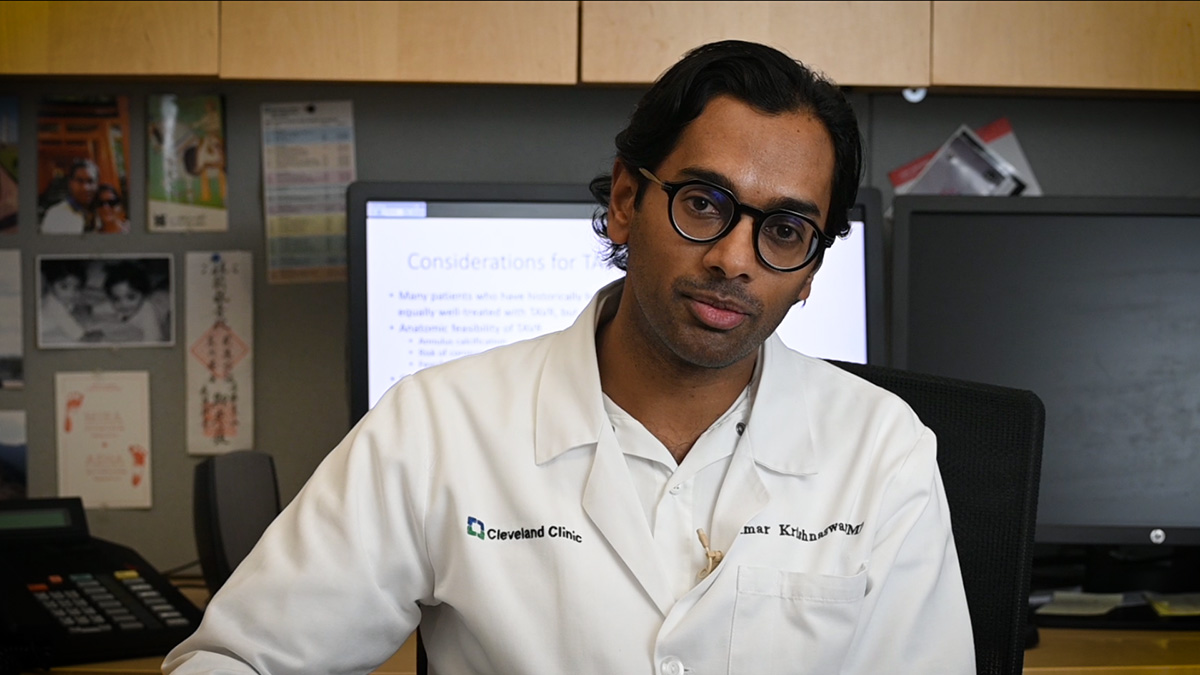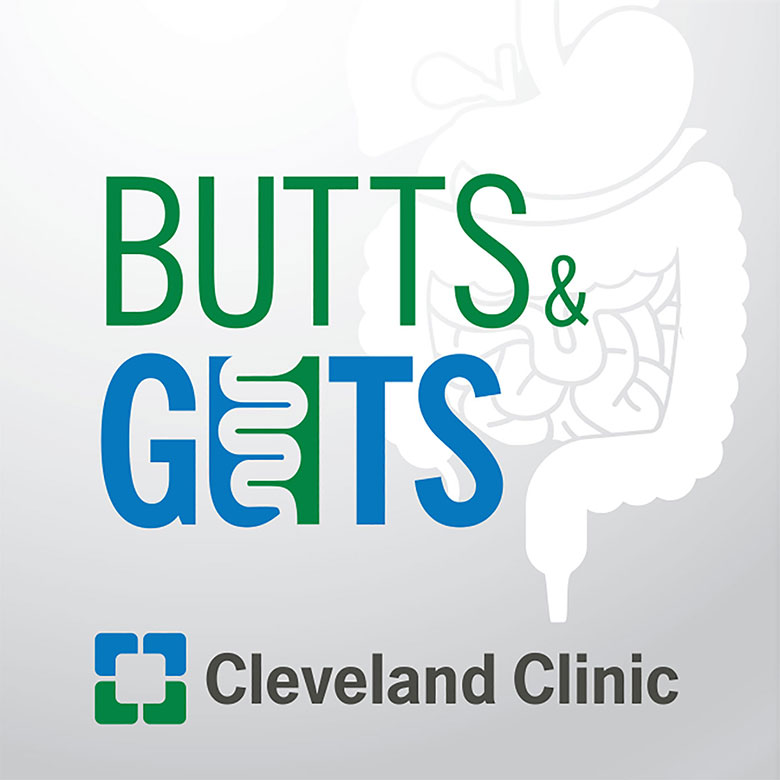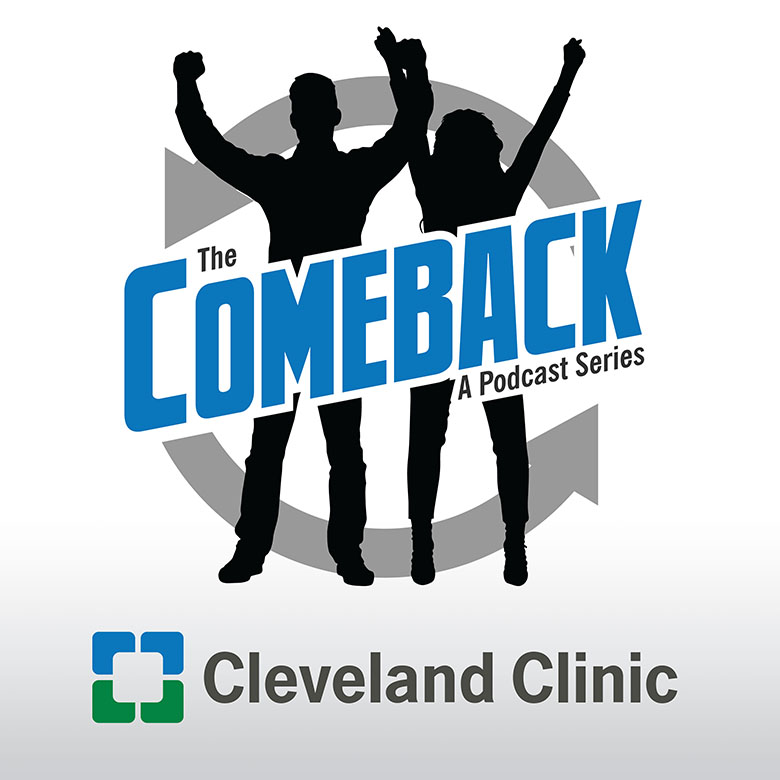Transcatheter Aortic Valve Replacement (TAVR) - Who is a Good Fit?

Transcatheter aortic valve replacement (TAVR) is an attractive option to treat aortic valve disease because it is a less invasive procedure that only requires a shorter hospital stay for most patients. Dr. Amar Krishnaswamy, Section Head of Invasive & Interventional Cardiology, discusses who is – and who is not - a candidate for this procedure.
Learn more about the Invasive & Interventional Cardiology Section at Cleveland Clinic
Subscribe: Apple Podcasts | Podcast Addict | Buzzsprout | Spotify
Transcatheter Aortic Valve Replacement (TAVR) - Who is a Good Fit?
Podcast Transcript
Announcer:
Welcome to Love Your Heart, brought to you by Cleveland Clinic's Sydell and Arnold Miller Family Heart, Vascular, and Thoracic Institute. These podcasts will help you learn more about your heart, thoracic and vascular systems, ways to stay healthy and information about diseases and treatment options. Enjoy.
Amar Krishnaswamy, MD:
Hi. My name is Amar Krishnaswamy. I'm the Section Head of the Interventional Cardiology Division here at Cleveland Clinic and the Director of our Cath Lab. I spend a lot of my time treating patients with aortic valve disease, so it's my pleasure to hopefully address some of the questions that you may have about your own aortic valve disease. If that is the case again, I'm sorry that this is likely a stressor for you, but I promise as an institution, we will do our best to help get you through to an appropriate plan of care.
Amar Krishnaswamy, MD:
Many patients often contact me because they have read about transcatheter aortic valve replacement or TAVR, which is a very attractive option for a number of patients as it's less invasive. It's a procedure that we do while patients are awake, and generally speaking, patients stay in the hospital between zero and one night. And so as a treatment option, patients often ask me, "Is this something that's good for me?" And while I would love to say every time that the answer is yes, that's true only most of the time.
Amar Krishnaswamy, MD:
What are the reasons we shouldn't consider TAVR for a given patient? Well, primarily we're treating aortic valve stenosis or a narrowing of the aortic valve with TAVR. Some patients have an aortic valve that leaks. Now, if it leaks as well as is stenotic or doesn't open well, often we can very easily treat that with TAVR because there's enough scar tissue built into the valve. That's why it doesn't open well, and a TAVR valve will hold nicely. But if the valve only leaks, that's not a great situation with which to treat a patient with a TAVR, because it's hard to make that valve really stick in place at least with the current technologies. And so while rarely we do offer TAVR to those patients who have only a leaky aortic valve or aortic regurgitation, that truly should be reserved as an option for those patients who are at such a high risk for a cardiac surgery that they don't really have an option unless we offer TAVR.
Amar Krishnaswamy, MD:
Another consideration is those patients who have bicuspid aortic valve stenosis. So we can often treat a bicuspid valve just as well as we can treat a tri leaflet valve with aortic stenosis; however, oftentimes bicuspid valves leak. They're not stenotic, which means I have regurgitation, and so again, I would refer to my earlier point that leaking valves or regurgitant valves, really should be considered only for TAVR in patients who are at a high risk for open-heart surgery. The other consideration specifically for patients with a bicuspid valve is that often those patients have a dilation or an enlargement of the aortic root or the ascending aorta, which is a portion of the aorta just above the valve itself.
Amar Krishnaswamy, MD:
Oftentimes, the decision to operate on someone's aorta with a bicuspid valve is actually a lower threshold than if you just have a dilated aorta and a trileaflet valve. So it's very important in patients with bicuspid aortic valve disease to analyze the aorta, and that may be a reason that TAVR is not in fact a good idea and rather surgery is preferred.
Amar Krishnaswamy, MD:
Oftentimes patients will already have an aortic valve replacement, a surgical aortic valve bioprosthetic, and that eventually will degenerate over a period of 10 or 15 or 20 years. Whether that degeneration results in aortic valve regurgitation or aortic valve stenosis, either way, that can be equally well treated with a TAVR inside of that surgical valve. But again, as with all of the other types of aortic valve disease that we've discussed, it's really important to analyze the anatomy. Oftentimes, that's with a CT scan or an MRI. Sometimes even a heart catheterization is necessary to really develop a full understanding of whether a TAVR is appropriate for a given patient, or would that patient be better suited to surgical AVR?
Amar Krishnaswamy, MD:
So again, we are certainly happy to provide TAVR to patients for whom it's an excellent treatment strategy, but I do want to caution that not all patients are well treated with the TAVR. And importantly, we're very fortunate here at Cleveland Clinic that our surgical results are as excellent as our TAVR results are. And so as an institution, I think we have the fortune to provide our patients with the best possible outcome, whether that's a catheter-based treatment strategy or a traditional cardiac surgery. Thank you so much.
Announcer:
Thank you for listening. We hope you enjoyed the podcast. We welcome your comments and feedback. Please contact us at heart@ccf.org. Like what you heard? Subscribe wherever you get your podcasts or listen at clevelandclinic.org/loveyourheartpodcast.

Love Your Heart
A Cleveland Clinic podcast to help you learn more about heart and vascular disease and conditions affecting your chest. We explore prevention, diagnostic tests, medical and surgical treatments, new innovations and more.


